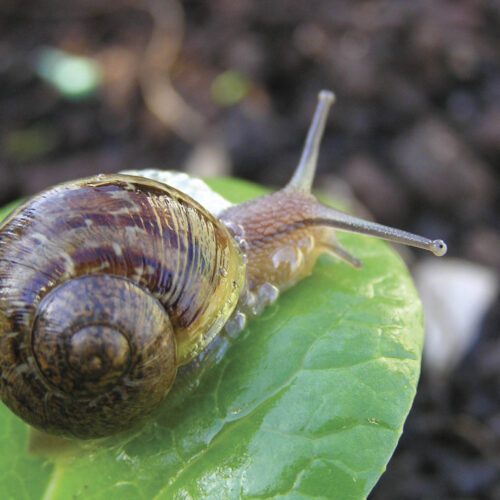Make your own herb-infused oils and balms
2016-04-11T01:30:55+10:00
Make your own herb-infused oils and medicinal balms with naturopath ANTHIA KOULLOUROS.
In the July/August issue of Organic Gardener magazine naturopath Anthia Koullouros showed how to make your own herb-infused oils.
Step One: Dry your fresh herbs
You will need: Paper bag, string, peppermint, calendula, English lavender and ginger rhizome.
Bundle all ingredients, except the ginger, together in about equal amounts and tie in a bunch with string. Place herbs upside down in a paper bag with holes cut out. Gather the end of the bag around the bundle and tie closed. Hang the bag upside down in a warm airy room out of direct sunlight. Leave to dry for one to two weeks. Note: To dry ginger, slice thinly and dry in the sun for three days. Turn over after one and a half days. If you are not immediately using the dried herbs, store in an airtight container out of direct light. Check after a few days to make sure the herbs are completely dry.
Step Two: Make an infused herbal oil
Use the dried herbs to release the scent and active constituents into the carrier oil.
You will need: 350-500ml sterile jar, 250ml olive oil, tea towel. Fill half a sterile jar with dried herbs and petals (stripped from their stems and flower heads), adding enough olive oil to cover them. Seal with a lid and place in a sunny spot, shaking from time to time. After one week, strain the oil through a clean tea towel.
Step Three: Make your balm
You will need: Pot of boiling water, heat-proof jug, bowl or pot, 1 heaped tablespoon of coconut oil, 1 heaped tablespoon of shea butter or cocoa butter, 2 teaspoons infused herbal oil, 100-150ml dark, sterile glass jar. Combine the shea or cocoa butter and coconut oil and melt in the heat-proof jug, bowl or pot. Do this using a water bath by placing the pot, jug or bowl above a larger pot of boiling water. Once melted, add the infused herbal oil and mix. Pour into a sterile clean jar.
Here’s a list of other herbs and their properties to make herb-infused oils for balms.
Chili Pepper (Capsicum annuum)
Warming, alleviates pain and sore muscles.
Calendula flower (Calendula officinalis)
All-around healing properties useful for a wide variety of skin irritations and conditions including superficial wounds, insect bites, rashes and abrasions. (This should never be used on deep wounds as it may heal the surface wound sealing in infection)
Chamomile flower (Matricaria recutita)
Minor abrasions, cuts and scrapes.
Chickweed (Stellaria media)
Soothing, helps with skin conditions, minor burns, and other skin irritations.
Ginger rhizome (Zingiber officinale)
Warming, alleviates pain and sore muscles.
Oregano leaf (Origanum vulgare)
Antiseptic, antimicrobial for skin infections and wounds.
Thyme leaf (Thymus vulgaris)
Antiseptic, antimicrobial for skin infections and wounds.
Lavender flower (Lavandula angustifolia)
Antiseptic, antimicrobial for skin infections and wounds as well as tissue healing.
Rosemary leaf (Rosmarinus officinalis)
Antiseptic, antimicrobial for skin infections and wounds. Alleviates pain and sore muscles.
Sage leaf (Salvia officinalis)
Antiseptic, antibacterial for skin infections and wounds.






